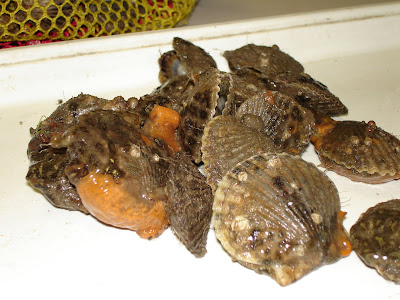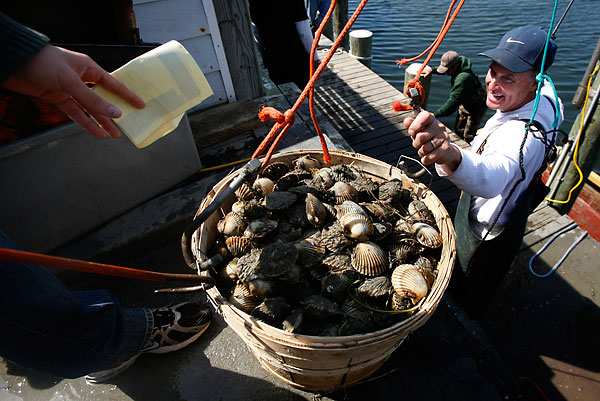No scallop news to report this time of year. I am in the process of getting my proposal together to defend it this spring, re-writing a manuscript, getting together a presentation for the upcoming
Benthic Ecology Meetings, and taking two classes. Crazy right? But somehow, I have found time to renew an old hobby of mine, tropical
fishkeeping. When I was growing up, my dad always had fish tanks, and when I was old enough, I started getting tanks of my own. Eventually, between me and my father, we had somewhere between 13-15 fish tanks throughout the house and basement. I tried to continue the hobby in college, but it is hard when you move every 8 months. So I have been out of the hobby for a few years, but was able to obtain a 20 gallon fish tank last September, and I set it up with freshwater (marine
ornamentals are difficult and expensive, both in livestock and equipment). Originally, I just had some tetras (lemon tetras mostly) and after the tank cycled, I added some
neons as well. After Christmas break, I added some angelfish and catfish. But I always wanted
discus. They are some of the most difficult freshwater fish to keep, requiring very specific water quality (low pH, soft water, low nitrogen, high temperature). My father and I tried to keep them a long time ago, but kept having difficulty - which was disheartening, considering we had kept just about every other type of freshwater fish with relatively few problems.
Discus are kind of like the holy grail of freshwater fish - breeders kept secrets for decades. But when I went to the pet store the other day, I saw discus at the right size (silver dollar) and the right price (29.99, 4 for 100). My water seemed right (temp ~80, but easily raised, pH ~6, etc) but I still wasn't sure. I probably wouldn't see discus this quality at this price again (especially if the economy gets fixed), but I had two angelfish (body size ~ a quarter) who were now established in the tank for over a month, and the tank was small. Both angelfish and discus are specialized
cichlids from the
floodwaters of the Amazon river, laterally compressed to swim between the submerged trees.
Cichlids, by nature, can be rather territorial and
aggressive by nature, and although angelfish and discus are generally regarded as gentle, there was some hesitation on my part. 20 gallon tanks are small - only 24 inches long - and with the angels being established, there isn't room for the discus to escape potential attacks. I thought long and hard. I spent about an hour watching the fish and talking to the store attendant. Finally I decided I won't have another opportunity to get the discus at this price, and I figured I would give it a try. This was yesterday. They seemed to acclimate fine, however, I raised the temperature in my tank anyway, from 80 to 85 (I was hoping only to come up to 82-82, but my heater is not that specific). Then I turned off the light and went to bed. I forgot to consider the potential for the dissolved oxygen to drop when I raise water temperature, and I woke up this morning with all the former residents (tetras and angels) gasping for air, and one of the catfish already dead. I was freaking out. I could not have this. I dropped the temperature back down to just over 80, took an inch of water out so the filter exhaust would stir the water better, and rushed to school to borrow an air pump for the time being. But I had class, so I couldn't stay and watch. I just kept my fingers crossed. When I got home today, I was surprised. All the fish seemed to be breather normally, swimming around, and all were eating (even the
discus, after only 1 day!) Catastrophe averted, for now. I will take pictures soon.





































































